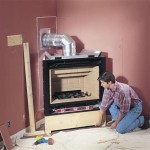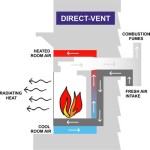Old World Design Fireplace Screens: A Timeless Addition to the Home
Fireplace screens serve both a practical and aesthetic purpose. They prevent sparks and embers from escaping the hearth, reducing the risk of fire hazards and damage to flooring or furniture. Beyond their functionality, fireplace screens also offer an opportunity to enhance the decorative appeal of a living space. Among the diverse styles available, the Old World design fireplace screen stands out for its enduring elegance and ability to evoke a sense of history and sophistication.
The term "Old World design" encompasses a range of stylistic influences primarily drawn from European history, spanning from the Renaissance through the Baroque and Rococo periods. This aesthetic emphasizes ornate details, rich materials, and a sense of handcrafted artistry. Applying this design philosophy to fireplace screens results in pieces that are not merely safety devices but are instead focal points that add character and visual interest to the fireplace area. These screens often incorporate intricate metalwork, classic motifs, and a generally robust construction, contributing to a feeling of warmth, tradition, and enduring quality.
Key Features of Old World Design Fireplace Screens
Several key features characterize Old World design fireplace screens and distinguish them from more contemporary or minimalist styles. These features often work in concert to create an overall impression of grandeur and historical authenticity. Understanding these elements can aid in selecting a screen that complements existing decor and achieves the desired aesthetic.
One of the most prominent features is the use of elaborate metalwork. Old World screens frequently showcase detailed scrollwork, floral patterns, and geometric designs crafted from materials such as wrought iron, brass, or bronze. The metalwork may be further enhanced with textures, such as hammering or embossing, to add depth and visual complexity. Skilled artisans often employ techniques like filigree or repoussé to create intricate patterns that evoke the craftsmanship of past eras. The metal framework itself tends to be heavier and more substantial than that found in modern screens, reflecting the emphasis on durability and timelessness.
Another defining characteristic is the prevalence of classic motifs. These motifs are drawn from the art and architecture of the Renaissance, Baroque, and Rococo periods. Common examples include acanthus leaves, fleur-de-lis, shells, grapevines, and stylized representations of animals such as lions or eagles. These motifs may be incorporated into the metalwork, the screen's framing, or even in the design of decorative elements such as finials or crests. The use of these recognizable and historically significant motifs contributes to the overall sense of tradition and elegance that defines Old World design.
The finishing touches and detailing are also crucial to achieving the desired Old World aesthetic. Patinas, such as antique bronze or aged iron, are often applied to the metal surfaces to create a sense of age and authenticity. These finishes mimic the natural oxidation and wear that occur over time, giving the screen a characterful and well-loved appearance. Decorative elements such as rivets, studs, or hand-forged details further enhance the handcrafted feel of the piece. The overall effect is one of meticulous attention to detail and a commitment to quality craftsmanship.
Materials Commonly Used in Old World Fireplace Screens
The choice of materials plays a significant role in determining the appearance, durability, and overall quality of an Old World design fireplace screen. Certain materials are particularly well-suited to this style, owing to their aesthetic properties and ability to withstand the high temperatures associated with fireplaces. The materials selected often contribute to the screen's weight and perceived value, further reinforcing the sense of quality and permanence associated with Old World design.
Wrought iron is a classic choice for Old World fireplace screens, prized for its strength, durability, and ability to be shaped into intricate designs. Wrought iron is created through a process of heating and hammering, which results in a distinctive texture and a high degree of resistance to heat and corrosion. Its inherent strength allows for the creation of robust and substantial screens that can withstand the rigors of daily use. The dark, matte finish of wrought iron also lends itself well to the aged and antique look that is characteristic of Old World design. It can be easily treated with patinas to further enhance its aged appearance.
Brass is another popular material, often used as an accent or as the primary metal in Old World fireplace screens. Brass is valued for its warm, golden color and its ability to be polished to a high shine. It is also relatively easy to work with, allowing for the creation of intricate details and embellishments. Brass is often used for decorative elements such as finials, crests, or small accents within the metalwork. Over time, brass will develop a natural patina, which can be left in place to enhance the aged appearance or polished to maintain its original shine. Its resistance to corrosion makes it a suitable material for use near fireplaces.
Bronze, an alloy of copper and tin, is also frequently employed in Old World fireplace screens. Bronze possesses a rich, reddish-brown color and a characteristic patina that deepens with age. It is known for its durability and resistance to corrosion, making it a practical choice for fireplace applications. Bronze can be cast into intricate shapes or worked with other metals to create visually striking designs. Its natural warmth and depth of color make it an ideal material for creating a sense of elegance and sophistication in the fireplace area. The inherent beauty of bronze ensures that it will remain a visually appealing feature for many years.
Integrating Old World Fireplace Screens into Interior Design
Integrating an Old World fireplace screen into an interior design scheme requires careful consideration of the existing decor and the overall aesthetic goals of the space. The screen should complement the existing furniture, color palette, and architectural details to create a cohesive and harmonious look. When properly integrated, an Old World fireplace screen can serve as a focal point that elevates the style of the entire room. Balancing the screen's ornate details with simpler elements in the room can prevent the space from feeling cluttered or overwhelming. The screen should be chosen to visually enhance the entire area of its location.
To ensure visual harmony, consider the existing architectural style of the room. Old World fireplace screens are particularly well-suited to homes with traditional architectural features such as crown molding, hardwood floors, and ornate trim. In such spaces, the screen will seamlessly blend in with the existing decor, enhancing the room's overall sense of elegance and sophistication. In more modern or contemporary homes, an Old World screen can create an appealing contrast, adding a touch of historical charm and visual interest. However, it is important to ensure that the screen does not clash with the overall aesthetic of the space. The careful selection of the screen's finish and design can help to bridge the gap between traditional and contemporary styles.
The color palette of the room should also be taken into account when selecting an Old World fireplace screen. Screens with dark finishes, such as antique bronze or aged iron, tend to work well in rooms with warm, earthy tones such as browns, golds, and reds. Screens with lighter finishes, such as polished brass or silver, can complement cooler color palettes such as blues, greens, and grays. The color of the firebox and surrounding wall also affects the aesthetic impact of the screen. The existing colors should be matched and contrasted to enhance the look of the fireplace screen. The size and shape of the fireplace itself also play into the color of the screen being chosen.
The scale of the fireplace screen should be proportional to the size of the fireplace opening and the overall dimensions of the room. An overly large screen can appear overwhelming, while a screen that is too small may get lost in the space. Measure the fireplace opening carefully before selecting a screen to ensure a proper fit. Consider the height of the screen as well, ensuring that it provides adequate protection from sparks and embers. The overall size and shape of the room will affect the look and feel of the screen.

Old World Fireplace Screen Iron Accents

Old World Design Geometric Fireplace Screen Paynes Gray

Old World Fireplace Screen Iron Accents

Old World Fireplace Screen Iron Accents

Old World Design Korbyn Gold Fireplace Screen Paynes Gray

Old World Antique Gold Iron Fireplace Fire Screen French Scroll 5 Panel 62 W

Barcelona Scroll Design Fireplace Screen Aged Old World Patina Wire Mesh

Old World Fireplace Door Collection Stoll Industries

Acanthus Leaf Antique Gold Scroll Design Fireplace Fire Screen Mesh Backing

Ping For Fire Screens The New York Times
Related Posts








